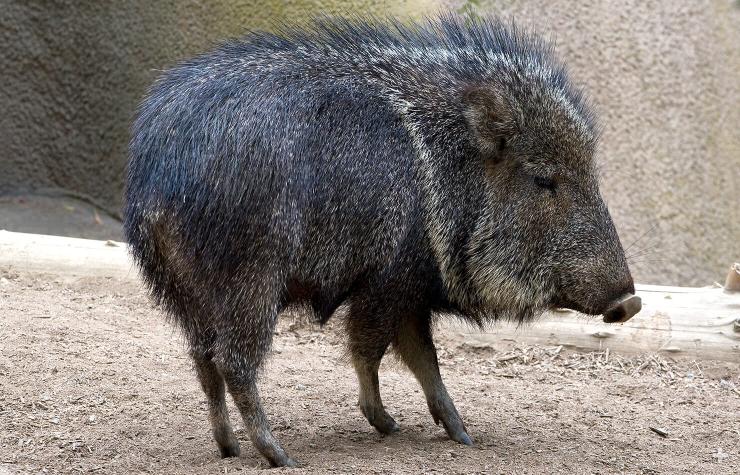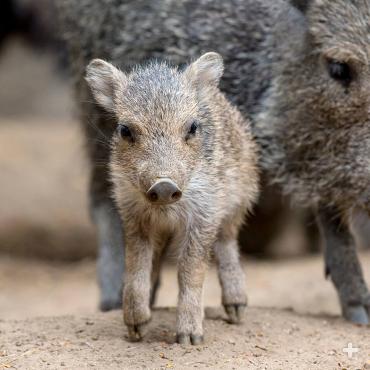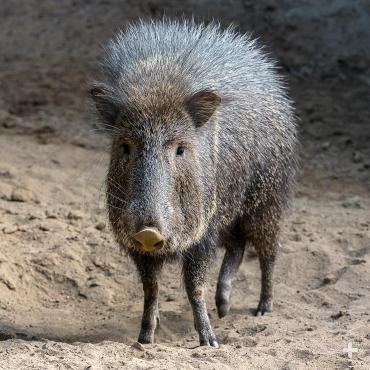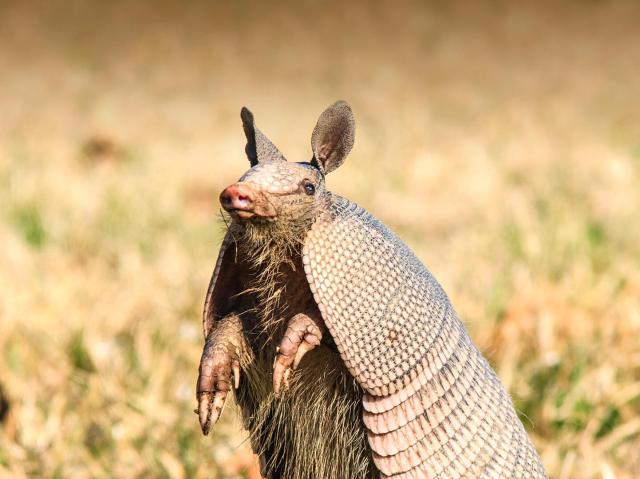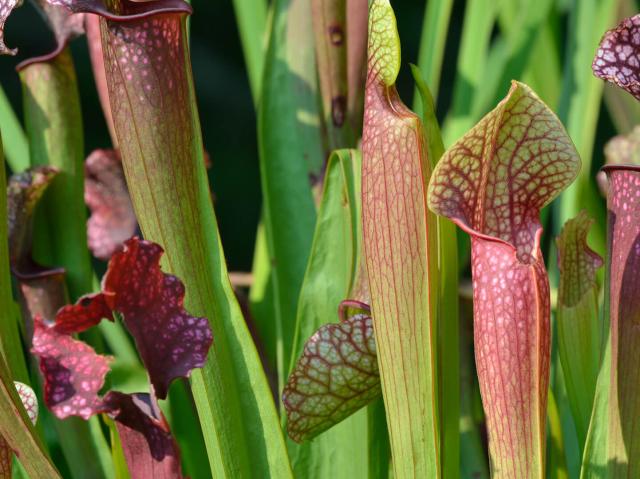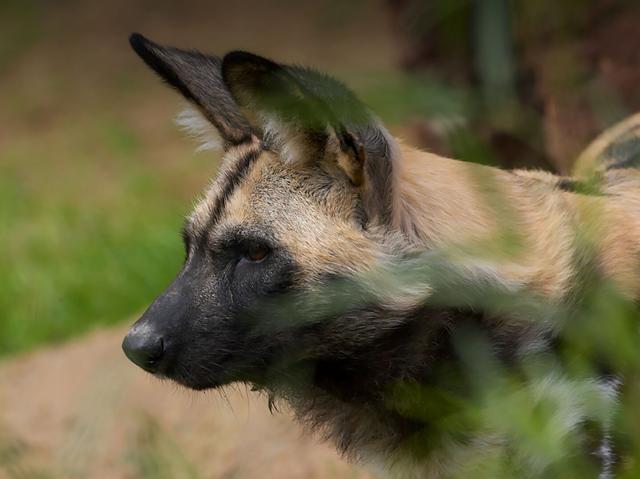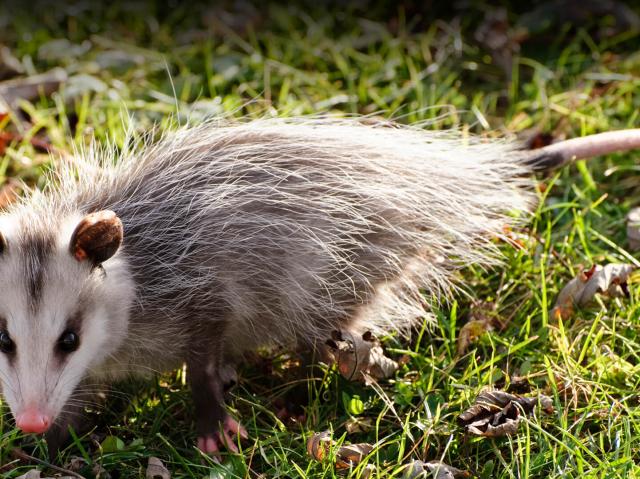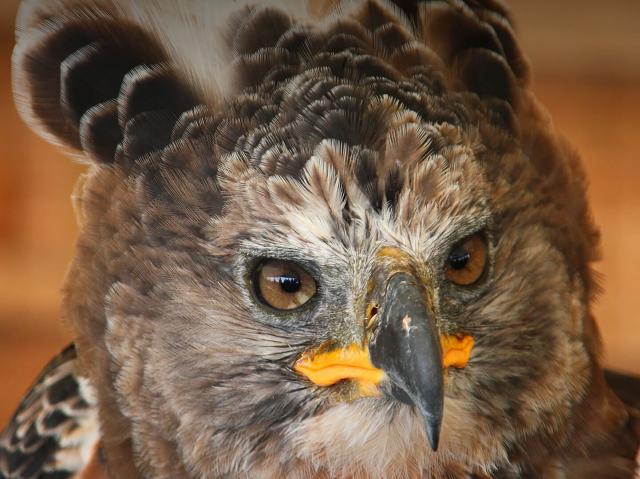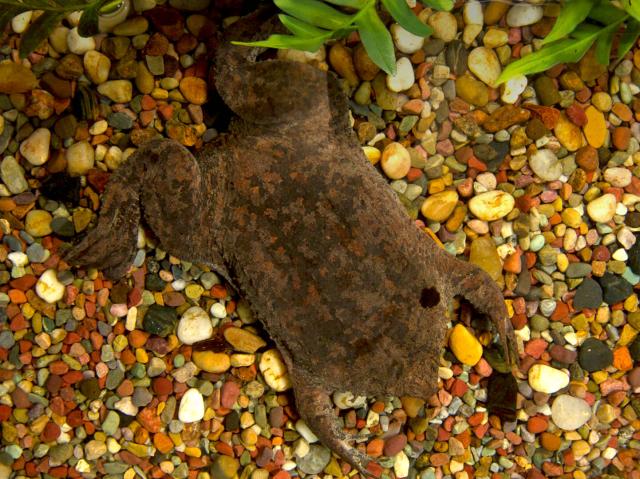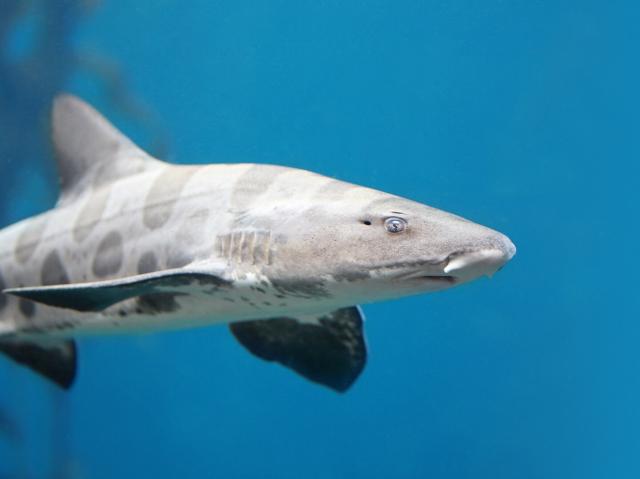
Peccary

- CLASS: Mammalia (Mammals)
- ORDER: Artiodactyla
- FAMILY: Tayassuidae
- GENUS: Catagonus, Tayassu, Pecari
- SPECIES: C. wagneri, T. pecari, P. tajacu

ABOUT
Don’t call them pigs! Swine (pigs) aren’t the only small-hoofed mammals with nostrils at the flat end of a long, mobile snout—meet peccaries. It’s easy to see how someone might mistake a peccary for a pig. Both are ungulates (hoofed mammals), with an even number of toes (four) on each dainty foot. That makes them members of the Order Artiodactyla, along with camels, giraffes, hippos, deer, cattle, and antelope. But it doesn’t take a taxonomist to see that they have a body shape—and lifestyle—that sets them apart. Barrel-bodied and small-legged, pigs and peccaries have a large head on a short, thick neck, and—more obvious than anything else—a characteristic snout that ends in a flat disk made of cartilage. Those are some of the traits that put them in their own suborder, called the Suina.
Unlike many of their artiodactyl relatives, the Suina do not have antlers or horns. And while their relatives are herbivores, pigs and peccaries are omnivores. Their eyes are rather small, and their vision isn’t great, but their excellent sense of smell and muscular snout are adaptations for rooting for food buried in soil. Both pigs and peccaries can swim, and both are often found wallowing in mud.
But the Suina is divided into two very different families: the Suidae (pigs, or swine) and the Tayassuidae (peccaries). They share a common ancestor, which likely originated in Asia, and early pigs and peccaries spread throughout Asia, Europe, and Africa. While swine remained established in the Old World, some early peccaries made their way to North America, and eventually, South America. In fact, scientists have discovered peccary fossils on every continent except Antarctica and Australia. Though peccaries ultimately vanished in the Old World, they flourished in the New World.
Peccaries differ from pigs in more than just geography, and perhaps the most reliable way to tell a peccary from a pig is to look at their mouth—the number and arrangement of teeth differs. Most noticeably, a pig’s canine teeth grow out and backward into large, curved tusks, obvious even when its mouth is closed. In contrast, a peccary’s proportionately smaller, straighter tusks aren’t so obvious. They grow in a more vertical orientation: upper canines grow downward, and lower canines grow upward. A peccary’s upper and lower tusks interlock, which stabilizes their jaws and strengthens their biting force. It also constrains their chewing motion to an up-and-down movement of the lower jaw, unlike the rather circular chewing motion of other artiodactyls. This adaptation gives peccaries the ability to crack open seeds as hard as palm nuts.
Some other differences between pigs and peccaries that you can see include ear size and shape. Most pigs have large, upright, rather pointed ears, while a peccary’s smaller ears could almost resemble those of a teddy bear. On the other end, a pig has a tasseled tail, but peccary’s tail is small and inconspicuous. (Only domestic pigs have curly tails.)
HABITAT AND DIET
Today, three species of peccaries live in the Americas. Like their pig relatives, they are quite adaptable, and peccary populations flourish in many different habitat types in North and South America. Peccaries are omnivores, and their diet reflects the foods that are most available in their habitat.
Plant material makes up most of a peccary’s diet. In fact, a peccary’s complex, three-chambered stomach is home to symbiotic microflora that are specialized for digesting the cellulose in plant walls. Peccaries favor fruits and seeds, and they are well adapted for rooting up roots, bulbs, tubers, and rhizomes. They sometimes munch on grasses and leaves, and supplement this plant-based diet with fungi, worms, grubs, small vertebrates, eggs, and carrion.
Collared peccaries Pecari tajacu are perhaps better known as javelinas, a name that comes from the Spanish word jabali, for “wild pig.” The only peccaries native to the U.S., their range extends from Arizona, New Mexico, and Texas to the Amazon Basin and northern Argentina. Collared peccaries live in just about every type of habitat found in their large range, including rainforest, dry thorn forest, grasslands, deserts, woodlands, swamps, and mangroves. In agricultural areas—and in some Arizona suburbs—these native mammals have become quite comfortable living near people. Collared peccaries that live in tropical forests are mostly frugivorous, while those living in the desert make cactus a regular part of their diet. A study found that the diet of collared peccaries in Peru’s Cocha Cashu Biological Station included 128 different types of plants.
White-lipped peccaries Tayassu pecari live throughout a large part of central South America, where their range overlaps with that of collared peccaries. They generally live in tropical forests and grasslands and primarily eat fruits and seeds, along with leaves and roots. Earthworms, eggs, small vertebrates, and carrion make up a smaller part of their diet. The same study in Peru’s Cocha Cashu Biological Station found that white-lipped peccaries fed on 144 types of plants.
South America’s dry Chaco region, which includes parts of Paraguay, Bolivia, and Argentina, is mostly dense, arid thorn forest, along with some open woodlands. Here, collared and white-lipped peccaries overlap with a third species, the rare and Endangered Chacoan peccary Catagonus wagneri, known locally as taguá. Cactus, bromeliad roots, and fruit provide most food for Chacoan peccaries. They also get the water they need from cactus. Depending on what's available, Chacoan peccaries also eat other vegetation, carrion, and small vertebrates.
Like gardeners, peccaries replant their food sources. They destroy some seeds as they eat, but they spit out some of the larger seeds near the parent plant. Small seeds pass through their digestive tract, and some sprout after they are expelled, usually far from the parent plant. A third way they re-seed is by transporting sticky or thorny seeds that attach to their wiry fur and fall off later. Peccaries regularly travel over large distances, and dispersing seeds far from parent plants contributes to plants’ genetic diversity—and a healthy ecosystem.
Peccary wallows are popular places— and not just for peccaries. Repeatedly trampling, rooting, digging, and resting compacts the soil, and some peccary wallows hold water even when nearby ponds are dried out. Wallows become distinct aquatic microhabitats that are critical breeding grounds for many frog species. That makes peccaries “ecosystem engineers,” a term biologists use to describe species that significantly modify their habitat and its resources and have a large impact on other species.
FAMILY LIFE
Most peccaries will reproduce by the time they are about two years old. Both males and females mate with many different partners, and they don’t form pair bonds. After a 20 to 23-week gestation, a mother peccary gives birth to a litter of one to four—usually two—precocial offspring. A young peccary looks like a miniature adult and can run around after its mother within a few hours of birth! It suckles frequently at first, but starts trying solid food within weeks. Youngsters often play while adults are foraging, moving, or resting. They are known for their frisky hopping behavior, leaping and running in circles. Juveniles sometimes play-bite and charge each other.
Tactile and gregarious, peccaries rub each other in greeting, groom and scratch each other, and lay close together when resting. Sometimes they communicate with low grunts, barks, coughs, huffs, and woofs, or by clacking their teeth. Another important part of social communication is scent marking objects like rocks and trees. Peccaries have a dorsal scent gland on their back, near their rump, which is particularly pungent. They scent mark each other, too. Standing head to tail, two peccaries rub against each other’s dorsal scent gland.
A peccary herd includes both females and males of all ages. Scent and vocalizations help the group stay together. Chacoan peccary herds are rather smaller—just 2 to 20 individuals—and some individuals may be solitary. Collared peccaries live in larger herds of about 6 to 50. Between 50 and 400 white-lipped peccaries live in the same herd, although there may be some temporary fission and fusion as the group forages.
Herds offer some protection from predators like mountain lions, jaguars, and smaller felids. For collared peccaries, American black bears and coyotes are predators, too. When a peccary feels threatened, it may erect its “dorsal mane”—a ridge of hair on its spine. Taking flight is usually the best option when danger is at hand. Peccaries run for cover and take refuge in burrows, caves, or under vegetation. Large groups of white-lipped peccaries have been known to counterattack a jaguar, unleashing alarm calls and teeth clashing to drive away the potential predator.
CONSERVATION
White-lipped peccaries are extinct in large parts of their former range, and The International Union for Conservation of Nature (IUCN) lists them as Vulnerable. IUCN lists the rare Chacoan peccary Catagonus wagneri as Endangered. Illegal and uncontrolled hunting for their meat and skins, habitat destruction from logging, agriculture, and pasture for livestock, and the spread of diseases are the chief threats to these species. While most populations of collared peccaries are fairly stable, in some places they face many of the same threats as their relatives.
San Diego Zoo Wildlife Alliance has played an active role in peccary conservation since 1985, providing stewardship for Proyecto Taguá, a program that established a protected population of Chacoan peccaries in Paraguay to learn more about them and to establish an assurance population. In 2010, the Proyecto grew into El Centro Chaqueño para la Conservación e Investigación (Center for Conservation and Research) continuing and expanding its conservation mission.
We also participate in the Association of Zoos & Aquariums (AZA) Chacoan Peccary Species Survival Plan (SSP) program. In total, 20 zoos in North America and 7 zoos in Europe are caring for an assurance population of Chacoan peccaries. In fact, many of the Chacoan peccaries we care for at the San Diego Zoo were born right here.
By joining San Diego Zoo Wildlife Alliance as an ally for wildlife, you help save species worldwide.
SIZE
Male and female peccaries are about the same size.
HEIGHT
Collared peccaries are the smallest species: their head-body length is 33 to 42 inches (84 to 106 centimeters), and height at the shoulder is 12 to 20 inches (30 to 50 centimeters).
For white-lipped peccaries, head-body length is 36 to 55 inches (91 to 139 centimeters), and height at the shoulder is 16 to 24 inches (40 to 60 centimeters).
For Chacoan peccaries, head-body length is 35 to 46 inches (90 to 117 centimeters), and height at the shoulder is 20 to 27 inches (52 to 69 centimeters).
WEIGHT
Collared peccaries are the smallest species: most individuals weigh between 33 and 62 pounds (15 to 28 kilograms), although in some populations in Arizona and in Peru they grow as large as 93 pounds (42 kilograms).
Most white-lipped peccaries weigh between 55 and 88 pounds (25 to 40 kilograms).
Most Chacoan peccaries weigh between 66 and 88 pounds (30 to 40 kilograms).
YOUNG
Gestation: from about 142 days (for collared peccaries) to about 162 days (for white-lipped peccaries).
Number of young at birth: one to four, usually two
Newborn white-lipped peccaries weigh 2.4 to 3 pounds (1,100 to 1,400 grams)
Newborn Chacoan peccaries weigh 1.1 to 2.3 pounds (500 to 1,050 grams).
Newborn collared peccaries weigh 1 to 1.5 pounds (450 to 690 grams).
Age of maturity: from one to two years
AT THE ZOO
Visitors can experience Chacoan peccaries at the San Diego Zoo.
FUN FACTS
Peccaries frequent mineral and salt licks, possibly to supplement their dietary calcium, magnesium, sodium, and chlorine.
Peccaries walk on the two middle digits of each foot. The other digits are vestigial dewclaws located higher on the leg.
A fourth peccary species—the giant peccary Pecari maximus—was proposed, when it was discovered in Brazil. However, most experts now regard these individuals as a population of large, collared peccaries.
In moist, tropical habitats, collared peccaries give birth more frequently than they do in cooler, dryer regions.
Collared peccaries can reach speeds up to 22 miles (35 kilometers) per hour.
Peccaries are smart. Experts say their intelligence can be compared with that of a dog, dolphin, or elephant.


